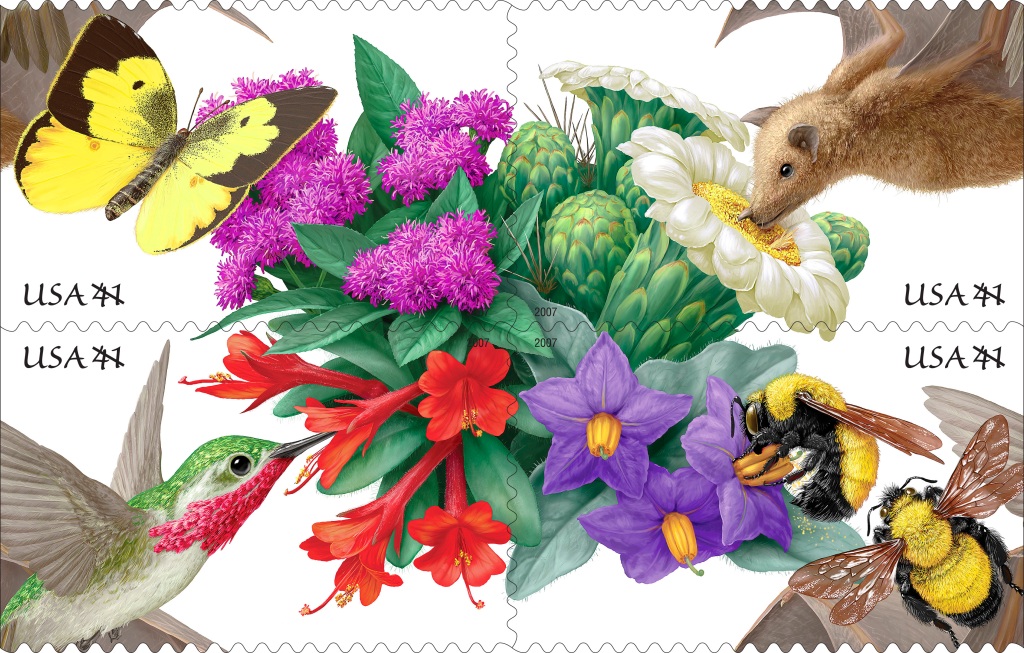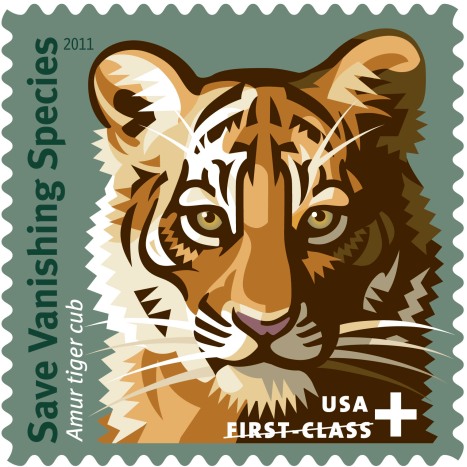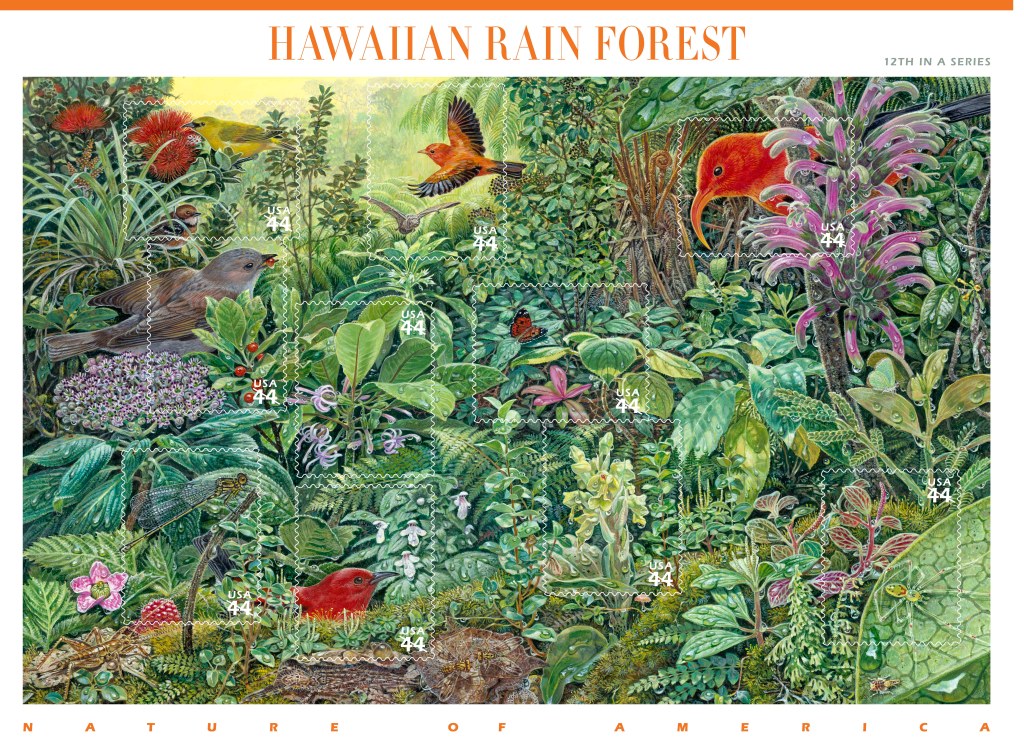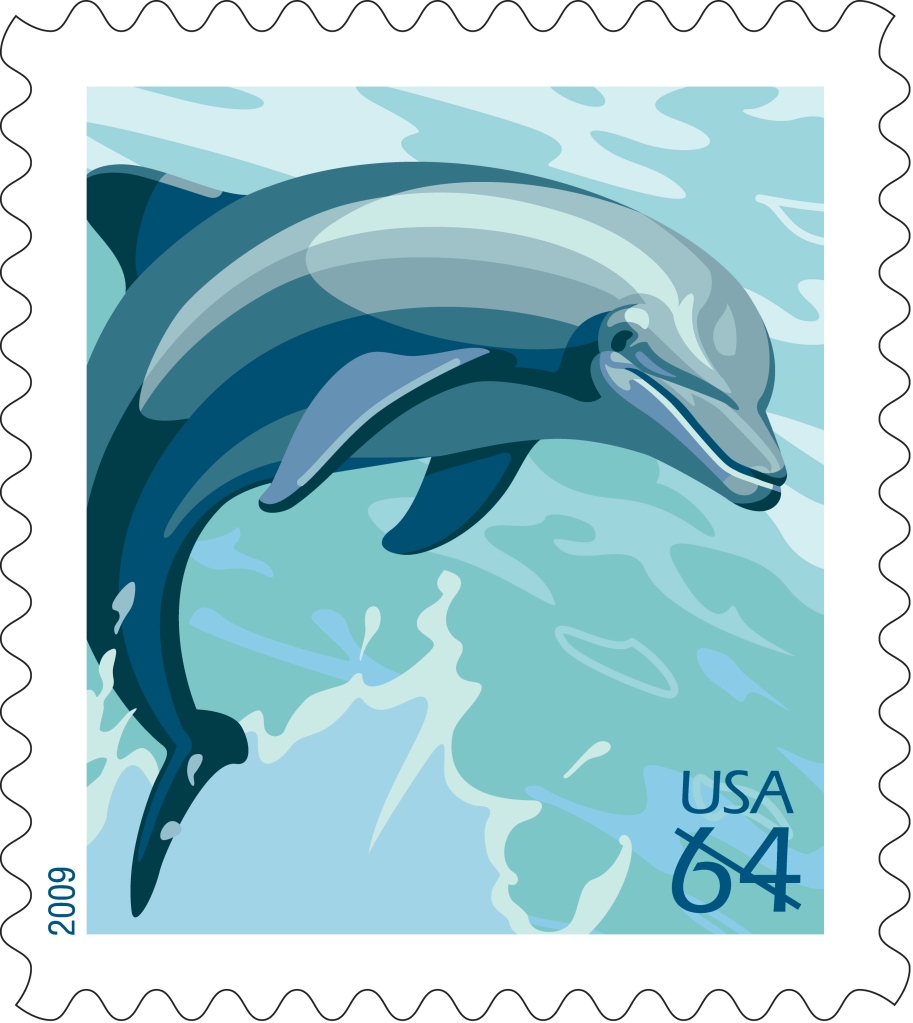In the spirit of springtime, we’ve decided to cap off National Wildlife Week with a look back at the four 2007 Pollination stamps. The stamps’ intricate design echoes and emphasizes the ecological relationship between pollinators and plants and hints at the biodiversity necessary to ensure the future viability of that relationship.
 Pollination—the transfer of pollen within flowers, or from one flower to another of the same species—is the basis for fruit and seed production. Insects and other animals, such as birds and bats, provide pollination services for the majority of the world’s food crops and flowering plants. In turn, the plants provide their pollinators with food and other nutrients in the form of energy-producing nectar and protein-rich pollen. Many plants also serve as hosts for the larvae of insect pollinators.
Pollination—the transfer of pollen within flowers, or from one flower to another of the same species—is the basis for fruit and seed production. Insects and other animals, such as birds and bats, provide pollination services for the majority of the world’s food crops and flowering plants. In turn, the plants provide their pollinators with food and other nutrients in the form of energy-producing nectar and protein-rich pollen. Many plants also serve as hosts for the larvae of insect pollinators.
Populations of some animal pollinators appear to be declining. Over the past few decades, scientists and growers—farmers and orchardists, as well as backyard gardeners—have all noted this downward trend. As a result, many concerned organizations and individuals, along with some government agencies, are working to encourage pollinator research, education, and awareness. They are also developing conservation and restoration projects aimed at ensuring measurable and documented increases in the numbers and health of both resident and migratory pollinating animals.
Many things can be done to help promote the health and vitality of pollinator populations. Among them are: planting flower gardens that provide a continuous succession of blooms throughout the season and utilize native plants; using nontoxic methods to control pests and weeds; protecting nontarget organisms such as pollinators from inadvertent exposure to pesticides, insecticides, herbicides, and other chemicals; and setting aside and protecting habitats suitable for wild pollinators.
Pollination is a partnership, and the interlocking design of the Pollination stamps reinforces the interconnectedness of nature. Strengthening that connection is one goal of The Pollinator Partnership, an outreach program of the North American Pollinator Protection Campaign (NAPPC), a cooperative conservation partnership of more than 120 organizations and individuals working across North America to support pollinators. The U.S. Postal Service and NAPPC recognize the importance of plant/pollinator relationships.
Thanks for sharing National Wildlife Week with us. What kinds of wildlife would you like to see on a future stamp? Let us know in the comments.

 [From guest contributor Laurie]
[From guest contributor Laurie]

